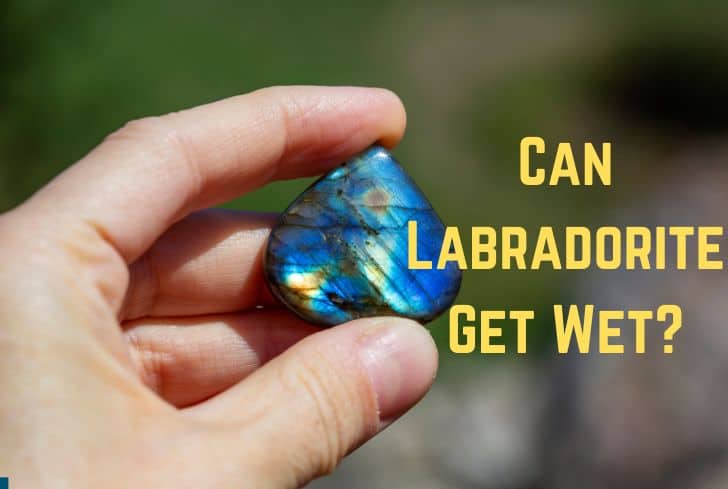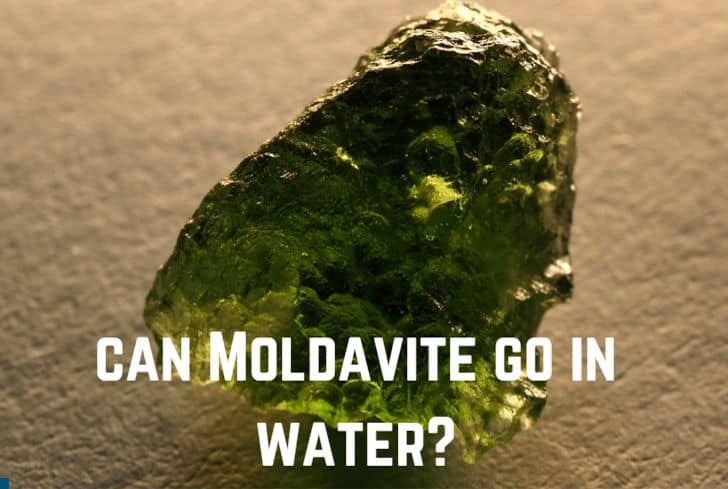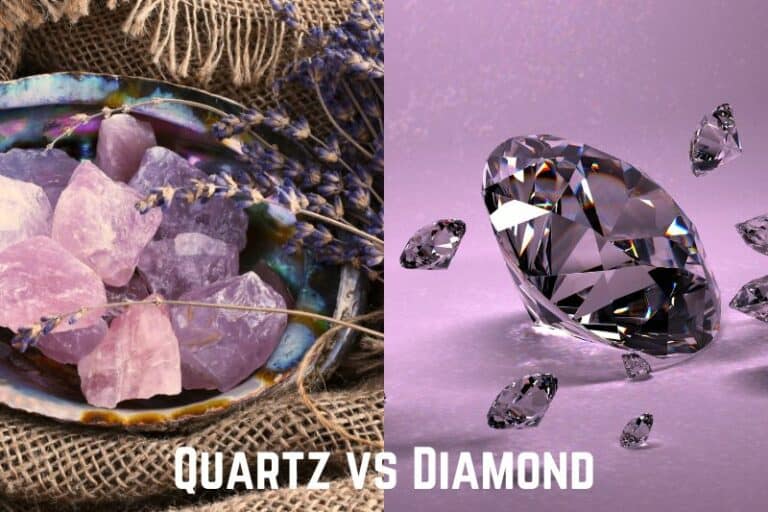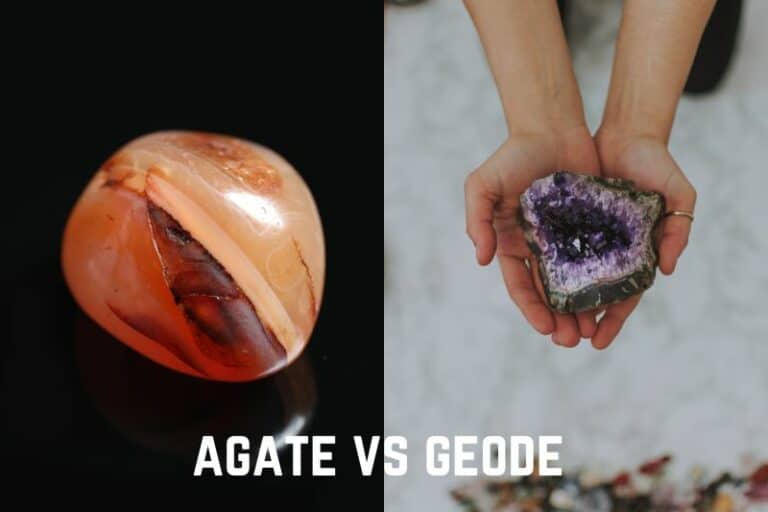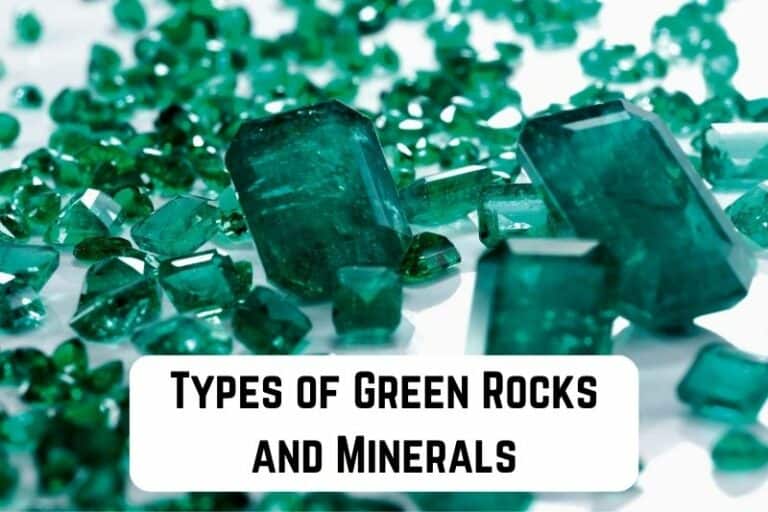Can Garnet Go in the Water? (And Sunlight?)
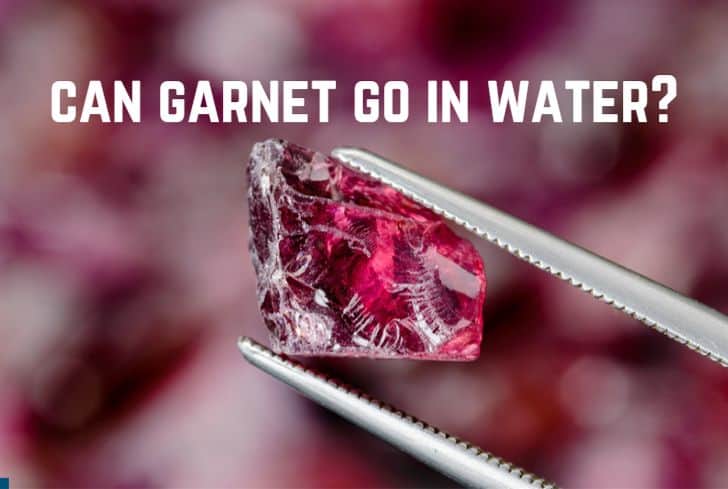
Garnet is a large group of silicate minerals that have the general chemical composition of X3Y2(SiO4)3. Some of the species of garnet are pyrope, almandine, spessartine, etc. Garnet gets its name from the Middle English term gernet meaning “dark red”, which is the most common color of the crystal.
Have you ever wondered if garnet can go in the water? In this article, we are going to discuss just that. We will begin by looking at the properties of garnet, some of which can be used to identify the stone’s authenticity. Then we will talk about garnet’s interaction with water, salt, and sunlight. Finally, we will learn how to clean and take care of garnet.
Read: Can Black Tourmaline Go in the Water?
Is Garnet Water Safe?
Yes, garnet can go in the water. It has a value of 6.0-7.5 on the Mohs Hardness Scale, which is well above the minimum value required for minerals to be safe underwater. However, like all stones, they should not be immersed for too long as water can damage their structure and tarnish their appearance.
Mohs Hardness Scale is a relative measure of a mineral’s resistance to scratching. Besides that, it also indicates a mineral’s relationship with water. Usually, a value over 5.0 means that the mineral is safe to go in the water.
Softer stones like selenite (value of 2.0) should never be put into water. But even harder stones like garnet should not be immersed for long. Water enters the crevices of stones and expands the cracks. These fissures can slowly damage the structure of the stone.
Water also tarnishes the appearance of stones. It strips off the polish from their surface, making them look duller. Water, by encouraging fissures, can also change the way light bounces inside the stone, damaging its optical properties.
Propoerties of Garnet
These are the properties of garnet:
- Appearance: Garnet species are found in every colour, with red being the most common. Blue garnets were first discovered in the 1990s, and they are the rarest. In terms of diaphaneity, the stones can range from transparent gemstone-quality specimens to opaque varieties used for industrial purposes. Garnet has a vitreous (glass-like) or resinous lustre.
- Composition & Structure: Garnets are silicate minerals that have the general formula of X3Y2(SiO4)3. The “X” is usually divalent cations (Ca, Mg, Fe, Mn)2+, and the “Y” is occupied by trivalent cations (Al, Fe, Cr)3+. Garnets are usually found in a dodecahedral (12-faced) crystal habit but can also be in trapezohedron and hexoctahedral habits. Garnets do not have cleavage, and they break with a conchoidal fracture.
- Hardness: Garnet species have different chemical compositions, so they can vary in terms of hardness. The range is between 6.0 to 7.5 on the Mohs Hardness Scale, which means that they are relatively hard and can survive underwater. Because of this, garnets have been a popular gemstone since the Bronze Age. Garnets are also used as abrasive grits and powders.
- Formation: Garnets are found throughout the world in igneous, metamorphic, and sedimentary rocks. Most often, garnet found near the Earth’s crust forms when a sedimentary rock with large aluminium content (for example, shale) is subjected to heat and pressure until it produces schist or gneiss. Garnets also occur in the rocks of contact metamorphism, lava flows, and the soils where garnet-bearing rocks erode.
- Magnetic susceptibility: Garnets give a pick-up response to a strong neodymium magnet, and this helps to distinguish garnets from all the other transparent gemstones used in the jewellery trade. Magnetic susceptibility, along with the refractive index, also helps to identify the different species of garnets. It also assists in determining the composition based on the percentages of end-member species.
Besides these physical properties, garnet is also believed to have several spiritual properties. Garnet has long been considered a symbol of love, thanks to its popular red colour that is associated with heart, blood, and inner fire. The fiery red colour also hints towards a fiery passion, and garnet is known as the stone of commitment. It is also the birthstone of January.

Can Garnet Go in Moonwater?
Yes, garnet can go in moon water. Recharging stones using the power of the moon is a popular method, and it is safe for garnet. However, like all stones, they should not be immersed in water for long.
To prepare moon water, just fill a bowl with water and leave it in an outdoor setting for an entire night. It’s best to pick a spot that gets direct moonlight, and people usually do this during a full moon. Eclipses are avoided.
The water is said to attract the vibrations of the moon and get charged with it. You can immerse the stone in moon water and it will absorb the energies of the moon. However, you must ensure that you do not leave the stone immersed for long.
Read: Can Larimar Go in the Water?
Can Garnet Go to the Saltwater?
No, garnet should not be immersed in salt water. With a value of 6.0-7.5 on the Mohs Hardness Scale, garnet is safe to go in the water, but it should still not be immersed for long. When we bring salt into the mix, it makes the corrosive effects of water even worse.
Salt, when dissolved in water, can enter the crevices of stones. Here, the particles stay even after water evaporates, expanding the cracks of the stones. These fissures can slowly damage the structure of the stone. Saltwater can also tarnish the appearance of the stone by stripping off the surface polish.
Salt can also react adversely with the elements of the stone, especially those containing iron. Saltwater hastens the rusting process by making the metal (iron) lose its electrons more easily.
Can Garnet Go in Sunlight?
Yes, garnet can go in sunlight. Keeping crystals out in the sun is a common way of recharging them, and it is safe for garnet. However, you must keep in mind that garnet is sensitive to heat and sudden temperature changes. So, make sure that you do not leave it out in sunlight for long.
With a value of 6.0-7.5 on the Mohs Hardness Scale, garnet is a relatively hard mineral. It is safe to go in sunlight, but it should not be kept out for long. Excessive heat or sudden temperature changes can damage the stone, especially its beautiful colors.
So, instead of direct sunlight, you can try keeping your stone on a windowsill. The glass will act as a protective layer against UV rays. You can also try leaving your stone out in the early morning hours when sunlight and heat are gentle.
How Can You Tell if You Have a Real Garnet?
To identify garnet crystals in the field, we look for things such as the refractive index, hardness, specific gravity, isometric crystal form, and the lack of cleavage. We can also use the magnetic susceptibility of garnet crystals.
If you are a gemstone buyer, you may not necessarily be able to find out about all these properties. So, instead, you can look for these factors to determine the stone’s authenticity:
- Appearance: Garnets are popular for their saturated and dense hues. So, the colour’s richness is a great way to identify the stone. If your stone is too light, it might be fake.
- Impurities: The inclusions in a garnet will depend on its variety. Red garnets usually have none, barring the Almandine garnet, which has asbestos fibre inclusions that give it a star-like effect. Orange garnets are known to have many inclusions. Make sure that the kind of garnet you are looking for has the usual level of inclusions.
- Reflection: Garnet’s beautiful qualities are one of the main factors in its growing demand. Hold the stone close to your eyes and look at a distant light source through it. You should see light reflected off the inner walls of the stone. If you don’t see reflections in the stone, it might be a fake one.
Check out this video by “Your Average Jeweller” to find out what makes garnet stand out amongst other gemstones.
How to Cleanse Garnet?
Follow these steps to clean garnet:
- Mix a soft detergent/soap with lukewarm water.
- Immerse garnet in the solution and clean it with a soft brush.
- Rinse the stone under running water to remove all excess soap.
- Let it air dry. Ensure that you twist it a few times to get rid of all water from the crevices.
Steam cleaning is not recommended for garnet. Ultrasonic cleaning is usually safe except for stones that have fractures, but cleaning the stone with warm soapy water is the best method.
Read: Can Shungite Go in the Water?
Conclusion
In this article, we looked at garnet’s relationship with water. With a value of 6.0-7.5 on the Mohs Hardness Scale, garnet is a relatively hard mineral that can safely go in the water, although it shouldn’t be immersed for long. We looked at the properties of the stone, and its interaction with water, sunlight, and salt. Finally, we learnt how to clean garnet stones.

